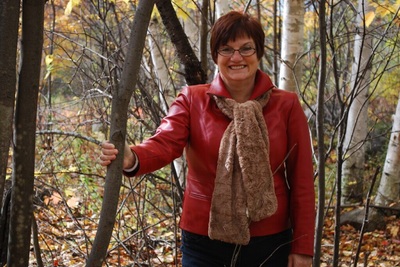Using Mindfulness and Meditation to Cope With Pain: Part 2.

As I have stated, meditation came to me early on in life. It hasn't been a constant and at first I thought I was a bad meditator because I couldn't quiet my mind. I have since learned even the most experienced meditators have those same experiences. Thoughts come in and out of our minds on a regular basis. The idea of mediation is to notice the thought and bring yourself back to the present again. It takes practice and why it is often referred to as a meditation practice.
One of the best ways I have heard it described is 1-2-3. One is the intention to mediate, two is the thought coming in and three is the thought going out and back to meditation and so on.
Hearing this from an experienced meditator allowed me the freedom to try without feeling I was failing every time a thought came into my head.
The next practical thing I learned is if you have a itch, scratch it. If you need to cough, go ahead and cough. If you are in pain and need to change position, do so. All of those things normalized my experience, allowed me to go with the flow and enjoy trying meditation again.
Another question many people ask is what time of day works best. I would say any time of day works well, it depends more on the person and their lifestyle. I like to mediate first thing in the morning because if feels like there is less on my mind at that time, however I have a sleep meditation that I use almost nightly. I believe the most important thing for those who are new to the practice is to be sure you are not interrupted.
There is no right or wrong way to meditate, it is a very individual experience. Hearing from experienced people can help but it has to be your own experience. There are many guided meditations and for me that is what works. I like to be taken on the journey. I like the voice to be there at least occasionally throughout the meditation. I have however practiced silent meditation as well and that did work for me. I think right now in my life, because there is so much noise in this head of mine, the guided works best as a starting point.
For those who are ready for silent meditation here is a link to the start and finish bells.
There are many free mediations online and I recommend that you hear the voices and decide which one works best for you. Here are some examples but please have a look and listen for what suits you best.
Type Wayne Dyer free meditation into Google and you will see there are many on you tube as well.
If you would like to buy a CD, or download this is another option.
In an article in Psychology Today Karen Kissel Wegela, PH.D writes:
"Mindfulness, paying precise, nonjudgmental attention to the details of our experience as it arises and subsides, doesn't reject anything. Instead of struggling to get away from experiences we find difficult, we practice being able to be with them. Equally, we bring mindfulness to pleasant experiences as well. Perhaps surprisingly, many times we have a hard time staying simply present with happiness. We turn it into something more familiar, like worrying that it won't last or trying to keep it from fading away."
I'd like to tell you how I got back to daily meditation. A dear friend of mine was going through a very difficult time with chronic pain. She was beside herself and wasn't herself for a long time. There is no quick fix for her problem, so being the tenacious, brave soul that she is, she started looking for ways to live with it. She found a course here in Ontario which links chronic pain sufferers with Mindful meditation. She did the course and I saw a tremendous change in her for the better.
The course is offered province wide so I decided to look into it for myself, since I knew I was having the second surgery. It took a little while but I started it in January. I enjoy it and of course I'm always learning new things, however I sure wish this was available to me when I first started my journey twenty years ago.
The course is called The Mindfulness Solution to Pain. It is available through the Neuro Nova Centre in Toronto, On.
It is largely is based on the book, The Mindfulness Solution to Pain by Jackie Gardner-Nix, and the course and teachings are based on the teachings of Jon Kabat-Zinn, Ph.D
The course itself is thirteen weeks and follows the book very closely, introducing each of the meditations along the way. In Ontario if you are referred by a doctor OHIP will cover the cost with the exception of about a hundred and fifty dollars.
I hope this gives you some curiosity about meditation and mindfulness. There is a lot to learn and I have only scratched the surface. Find what works for you and give it a try.
One of the best ways I have heard it described is 1-2-3. One is the intention to mediate, two is the thought coming in and three is the thought going out and back to meditation and so on.
Hearing this from an experienced meditator allowed me the freedom to try without feeling I was failing every time a thought came into my head.
The next practical thing I learned is if you have a itch, scratch it. If you need to cough, go ahead and cough. If you are in pain and need to change position, do so. All of those things normalized my experience, allowed me to go with the flow and enjoy trying meditation again.
Another question many people ask is what time of day works best. I would say any time of day works well, it depends more on the person and their lifestyle. I like to mediate first thing in the morning because if feels like there is less on my mind at that time, however I have a sleep meditation that I use almost nightly. I believe the most important thing for those who are new to the practice is to be sure you are not interrupted.
- Find a quiet place where you won't be disturbed
- Find a comfortable position
- Take three deep breaths and allow yourself to relax before you begin
- Do not have a phone nearby, make sure sounds from phones and computers are muted
- If you like a focal point a candle works well
- If there is a sound such as a ticking clock, don't be annoyed by it, incorporate it into the experience.
- Some people make an intention before the meditation and then carry it with you through the day. ie. Today I will remain calm in a stressful environment
- Relax and let it happen
- Find the right meditation for you, start with short five minute ones if necessary
- Don't give up, practice helps immensely
There is no right or wrong way to meditate, it is a very individual experience. Hearing from experienced people can help but it has to be your own experience. There are many guided meditations and for me that is what works. I like to be taken on the journey. I like the voice to be there at least occasionally throughout the meditation. I have however practiced silent meditation as well and that did work for me. I think right now in my life, because there is so much noise in this head of mine, the guided works best as a starting point.
For those who are ready for silent meditation here is a link to the start and finish bells.
There are many free mediations online and I recommend that you hear the voices and decide which one works best for you. Here are some examples but please have a look and listen for what suits you best.
Type Wayne Dyer free meditation into Google and you will see there are many on you tube as well.
If you would like to buy a CD, or download this is another option.
In an article in Psychology Today Karen Kissel Wegela, PH.D writes:
"Mindfulness, paying precise, nonjudgmental attention to the details of our experience as it arises and subsides, doesn't reject anything. Instead of struggling to get away from experiences we find difficult, we practice being able to be with them. Equally, we bring mindfulness to pleasant experiences as well. Perhaps surprisingly, many times we have a hard time staying simply present with happiness. We turn it into something more familiar, like worrying that it won't last or trying to keep it from fading away."
I'd like to tell you how I got back to daily meditation. A dear friend of mine was going through a very difficult time with chronic pain. She was beside herself and wasn't herself for a long time. There is no quick fix for her problem, so being the tenacious, brave soul that she is, she started looking for ways to live with it. She found a course here in Ontario which links chronic pain sufferers with Mindful meditation. She did the course and I saw a tremendous change in her for the better.
The course is offered province wide so I decided to look into it for myself, since I knew I was having the second surgery. It took a little while but I started it in January. I enjoy it and of course I'm always learning new things, however I sure wish this was available to me when I first started my journey twenty years ago.
The course is called The Mindfulness Solution to Pain. It is available through the Neuro Nova Centre in Toronto, On.
It is largely is based on the book, The Mindfulness Solution to Pain by Jackie Gardner-Nix, and the course and teachings are based on the teachings of Jon Kabat-Zinn, Ph.D
The course itself is thirteen weeks and follows the book very closely, introducing each of the meditations along the way. In Ontario if you are referred by a doctor OHIP will cover the cost with the exception of about a hundred and fifty dollars.
I hope this gives you some curiosity about meditation and mindfulness. There is a lot to learn and I have only scratched the surface. Find what works for you and give it a try.



